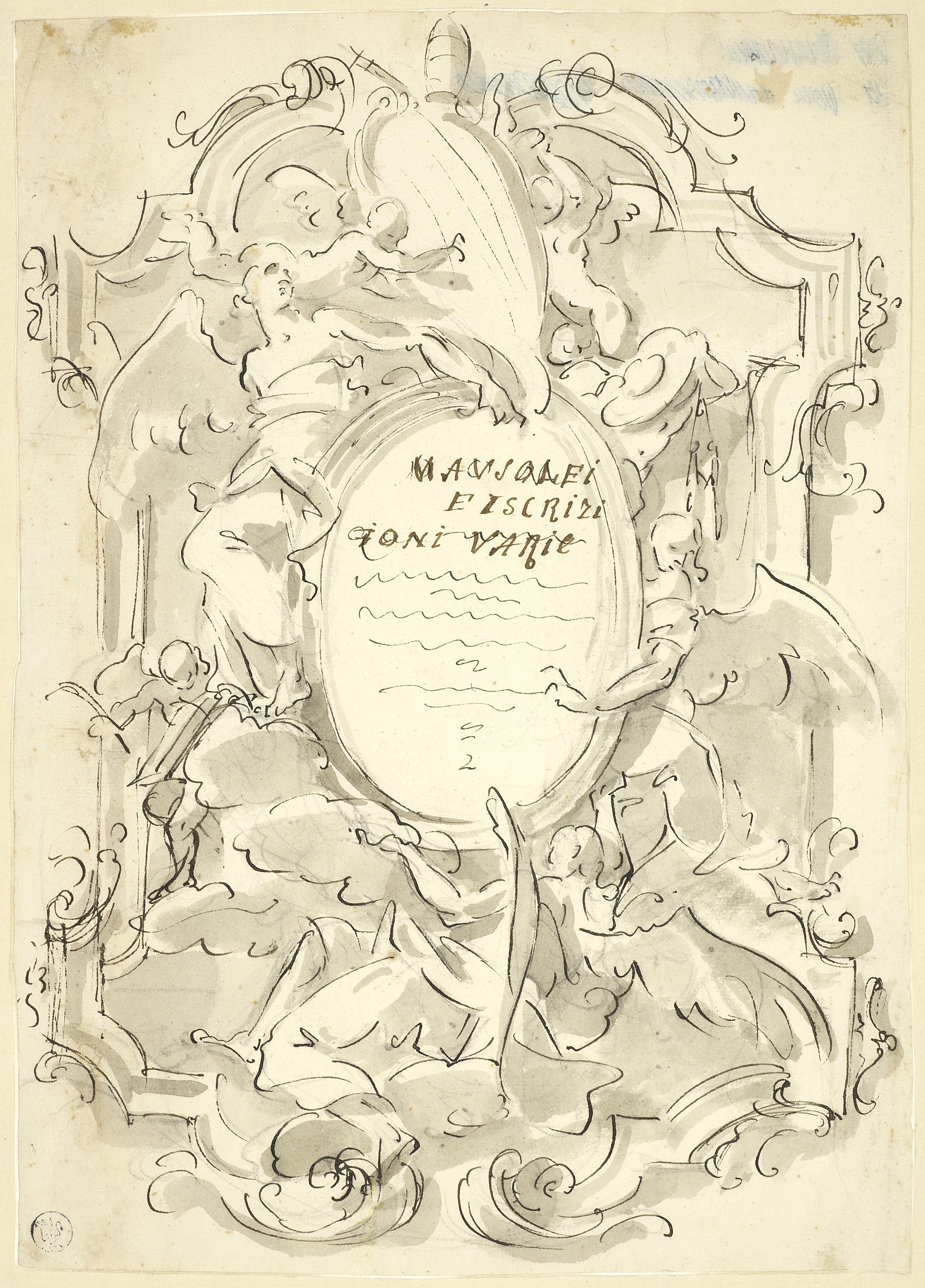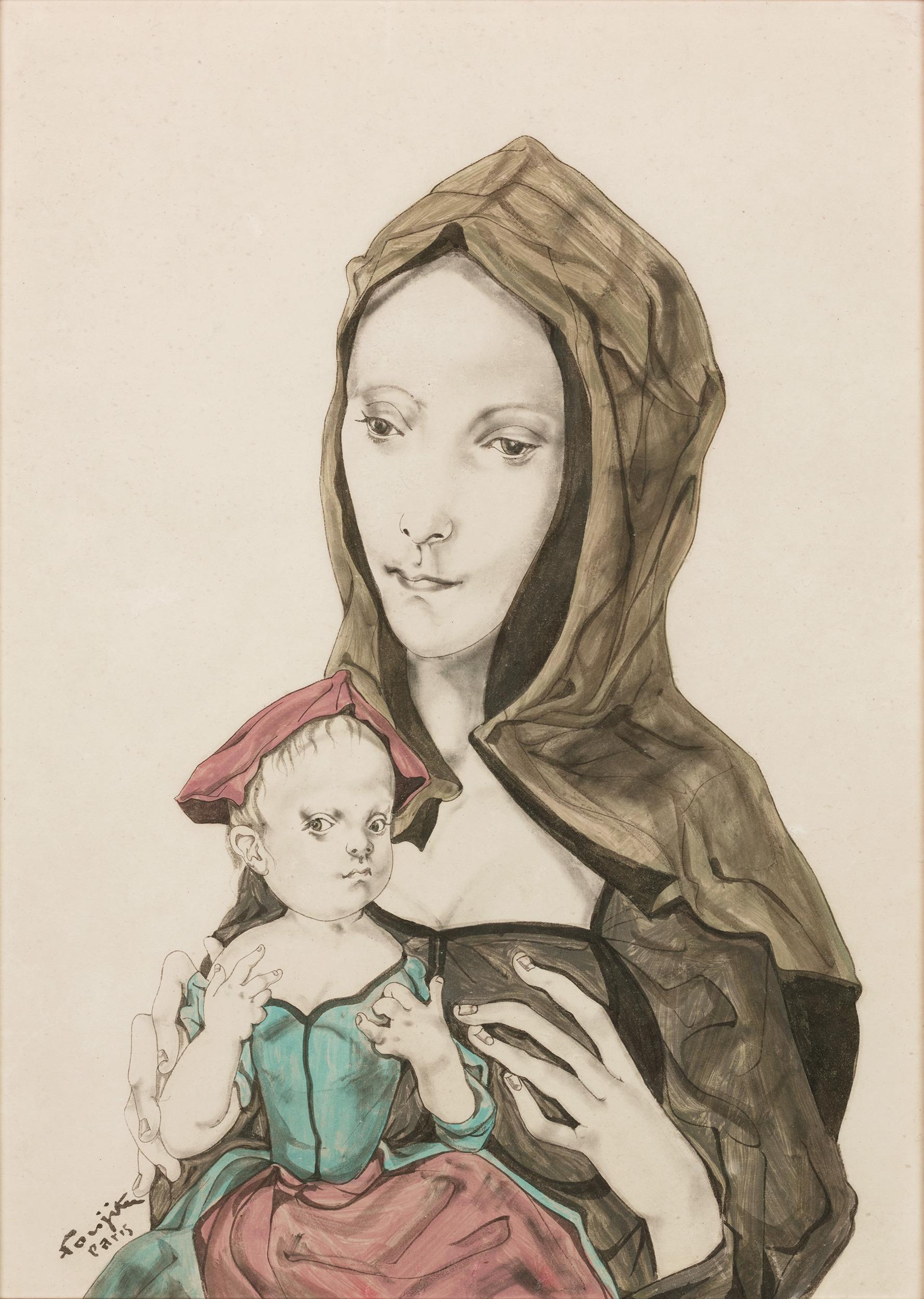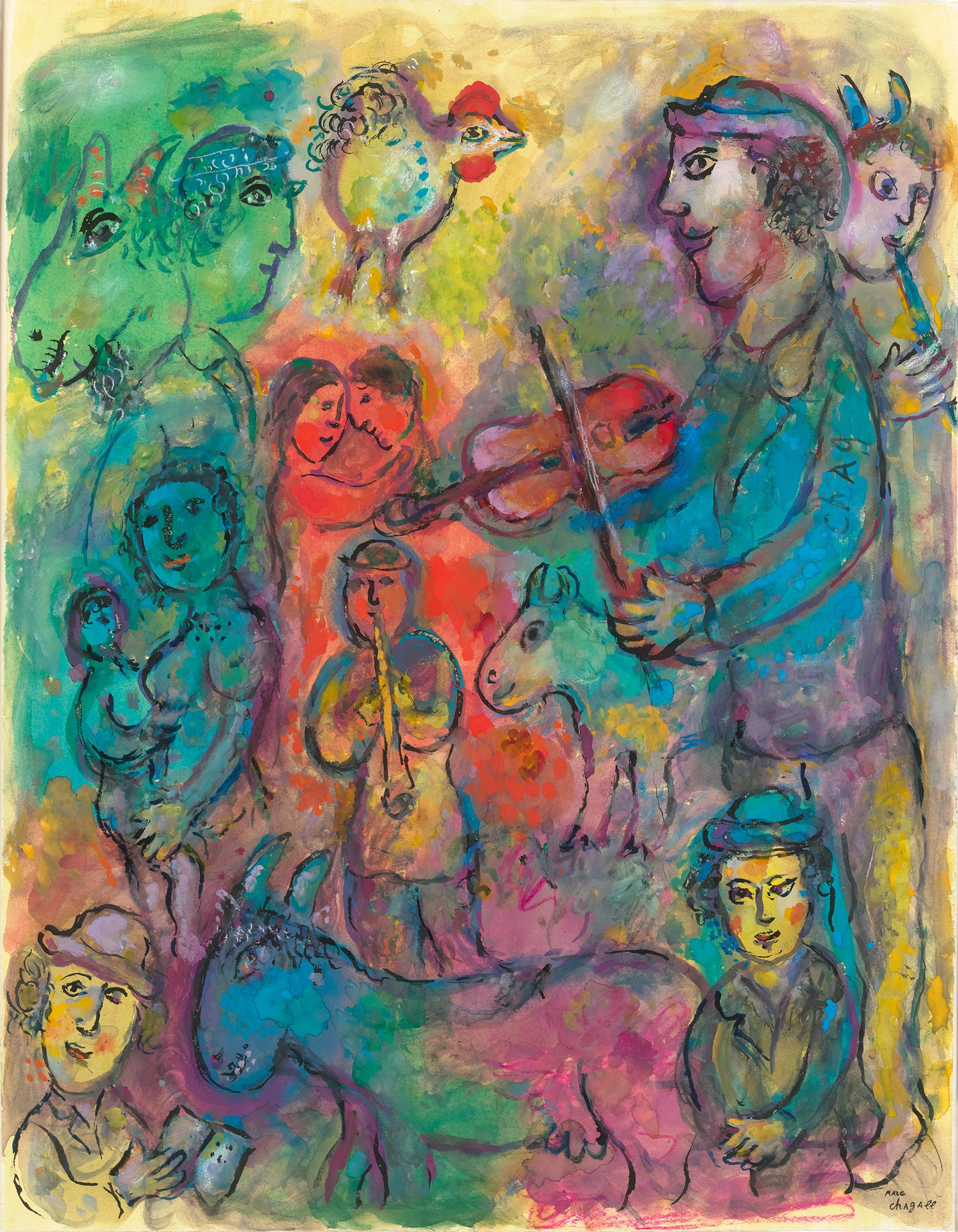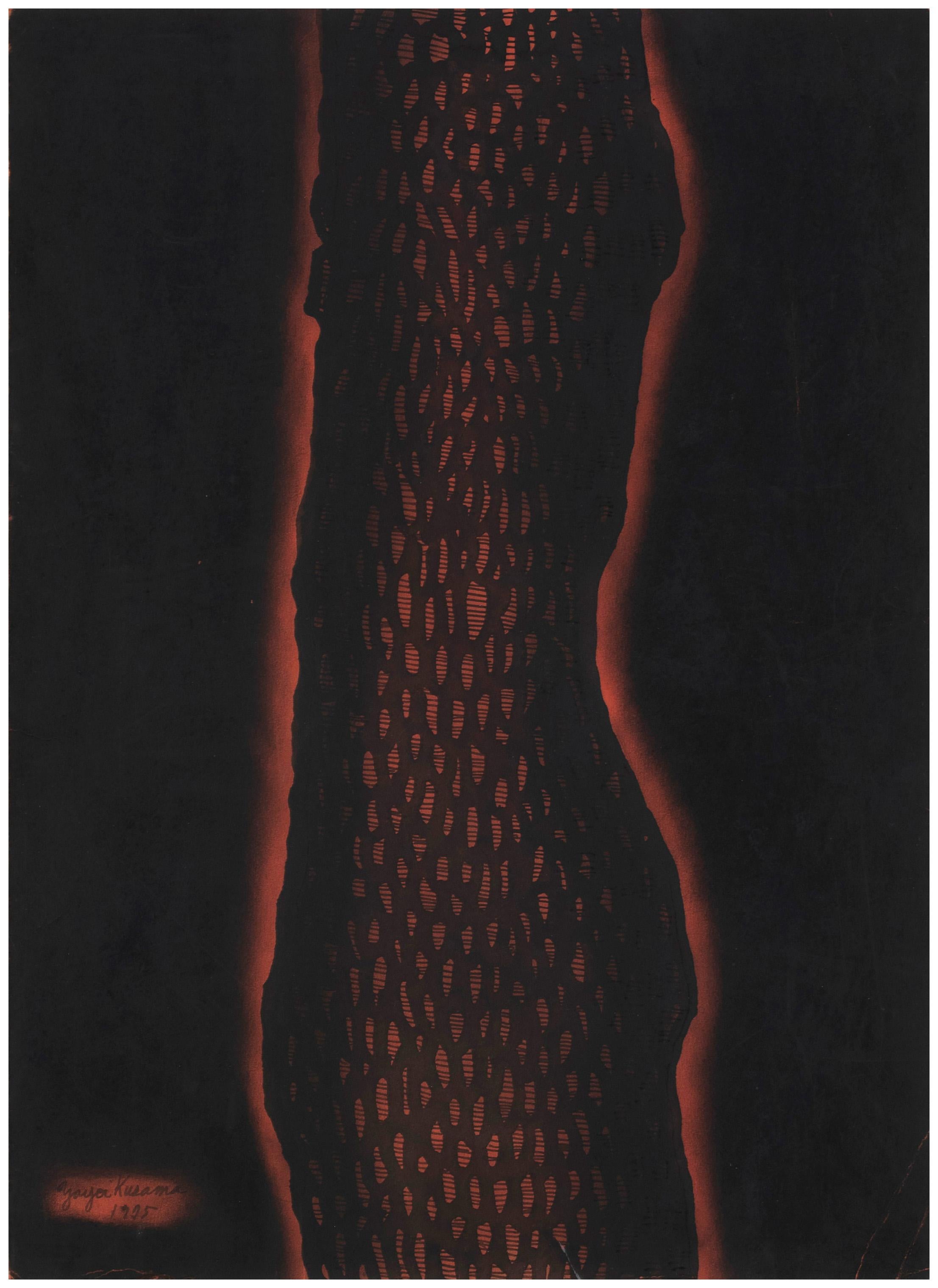Jean CocteauSouvenirs Du Pays Natal - Original China Ink Drawing by Jean Cocteau - 1920s1920s
1920s
About the Item
- Creator:Jean Cocteau (French)
- Creation Year:1920s
- Dimensions:Height: 10.04 in (25.5 cm)Width: 7.88 in (20 cm)Depth: 0.04 in (1 mm)
- Medium:
- Period:
- Framing:Framing Options Available
- Condition:Insurance may be requested by customers as additional service, contact us for more information.
- Gallery Location:Roma, IT
- Reference Number:
Jean Cocteau
Jean Cocteau was a French painter, poet, designer, printmaker, playwright and filmmaker. He is one of the most important figures of French Surrealism, although he always denied being in any way connected to the movement.
Cocteau was born to a socially prominent Parisian family. His father, George Cocteau, was an amateur painter who committed suicide when Jean was only a child. Jean became famous in Bohemian circles as "The Frivolous Prince." In 1912, he collaborated with the Ballets Russes. After World War I, Cocteau met the poet Guillaume Apollinaire and the artist Pablo Picasso. In 1917, thanks to Sergei Diaghilev, a Russian impresario, Cocteau wrote a scenario for the ballet Parade — the set of this important ballet was realized by Pablo Picasso and the music was composed by Erik Satie. In the late 1920s, Cocteau wrote the libretto for Igor Stravinsky’s opera-oratorio Oedipus Rex. In 1918, he met the French poet Raymond Radiguet. They worked and went on many journeys together, and Cocteau promoted his friend's works in his artistic group.
Cocteau is well-known for his novel Les Enfants Terribles (1929) and the films The Blood of a Poet, Beauty and the Beast and Orpheus. During World War II, he created sets for the Théâtre de la Mode. In 1955, he was elected to the Académie Française and the Royal Academy of Science, Letters and Fine Arts of Belgium. He was commander of the Legion of Honour, a member of the Academié Mallarmé, the Academy of Arts (Berlin) and the American Academy of Arts and Sciences.
Find Jean Cocteau art today on 1stDibs.
- ShippingRetrieving quote...Ships From: Rome, Italy
- Return PolicyA return for this item may be initiated within 14 days of delivery.
- The Bird - Drawing by Louis Anquetin - Early 20th CenturyBy Louis AnquetinLocated in Roma, ITThe Bird e is an ink drawing on paper realized in the early 20th Century by Louis Anquetin (1861-1932). Hand-signed on the lower. Good condition with slight foxing. Louis Émile An...Category
Early 20th Century Modern Figurative Drawings and Watercolors
MaterialsPaper, Ink
- Austrian Soldiers - Drawing by Gabriele Galantara - 1916By Gabriele GalantaraLocated in Roma, ITAustrian Soldiers is a modern artwork by Gabriele Galantara (1865-1937) in 1916. The artwork was realized in China ink and watercolor on cardboard. ...Category
1910s Modern Figurative Drawings and Watercolors
MaterialsInk, Pen, Watercolor
- Temple in the Garden - Drawing - Early 20th CenturyLocated in Roma, ITTemple in the Garden is an original artwork, pencil, watercolor and charcoal on paper. Is not signed and dated but we can attribute the period early 20th Century. It's an evocative...Category
Early 20th Century Modern Figurative Drawings and Watercolors
MaterialsInk, Paper
- Elite Discourse - Drawing by Luigi Bompard - 1920sLocated in Roma, ITElite Discourse is a watercolor and ink drawing on ivory-colored paper, in the 1920s realized by Luigi Bompard (1879-1953). Hand-signed in pen on the lower margin. In good conditio...Category
1920s Art Deco Figurative Drawings and Watercolors
MaterialsInk, Watercolor
- Village - Drawing by Nishimura Nantei - Early 19th CenturyLocated in Roma, ITVillage is a Black Ink Drawing attributed to Nishimura Nantei in the Early 19th Century. Good conditions. The artwork is depicted through soft strokes in a well-balanced composition.Category
Early 19th Century Modern Landscape Drawings and Watercolors
MaterialsInk
- Landscape with Trees - Original Drawing - 1950sLocated in Roma, ITLandscape with trees is an original china ink drawing realized by Unknown Artist in 1950s. The artwork represent a beautiful landscape. Good condition, so signature, mounted on a w...Category
1950s Modern Figurative Drawings and Watercolors
MaterialsInk
- Study for a Frontispiece, a baroque drawing by Giovanni Antonio PellegriniBy Giovanni Antonio PellegriniLocated in PARIS, FRThis masterly frontispiece study, executed with a very sure hand, testifies to the survival of the great Baroque taste in 18th century Venice. It could be one of the very last works by Giovanni Antonio Pellegrini: the few lines that cross the papal arms evoke those of Benedict XIV, who became pope in 1740, one year before the artist's death. 1. Giovanni Antonio Pellegrini and the European influence of Venetian history painting in the 18th century Giovanni Antonio Pellegrini was born in Venice in 1675 and trained in the studio of the Milanese painter Paolo Pagani (1655 - 1716). Pagani, who had been living in Venice since 1667, took him to Moravia and Vienna from 1690 to 1696. After a stay in Rome from 1699 to 1701, Pellegrini married Angiola Carriera in 1704, the sister of the great pastelist Rosalba Carriera. From 1708 onwards, Pellegrini left Venice and began an extensive tour of Europe: he worked in England between 1708 and 1713, where he met great success, particularly at Kimbolton Castle and Castle Howard. He then worked in Germany and the Netherlands, then in Bohemia and Austria, before returning briefly to England in 1719. In 1720 he was in Paris where he decorated the ceilings of the Royal Bank for John Law...Category
1740s Old Masters Figurative Drawings and Watercolors
MaterialsInk
- UntitledBy Franz KlineLocated in Beverly Hills, CAProvenance: Marlborough Gallery David McKee, Inc. Manny Silverman Gallery Private collection, Los AngelesCategory
1950s Abstract Expressionist Abstract Drawings and Watercolors
MaterialsPaper, Ink
- Portrait of a Mother and Child by Tsuguharu FoujitaBy Léonard Tsuguharu FoujitaLocated in New Orleans, LATsuguharu Foujita 1886-1968 | Japanese-French Portrait of a Mother and Child Signed “Foujita / Paris” (lower left) Ink and watercolor on paper An artistic luminary well ahead of his time, Tsuguharu Foujita burst onto the international art scene in the early 20th century as one of the most important artists in early Japanese modernism...Category
20th Century Post-Impressionist Portrait Drawings and Watercolors
MaterialsPaper, Ink, Watercolor
- Musiciens Sur Fond Multicolore By Marc ChagallBy Marc ChagallLocated in New Orleans, LAMarc Chagall 1887-1985 Russian Musiciens sur fond multicolore (Musicians on a multicolored background) Signed 'Chag' (on the sleeve of the right figure); stamped with the signature 'Marc Chagall' (lower right) Tempera, gouache, colored ink and India ink and pastel on paper “The fact that I made use of cows, milkmaids, roosters and provincial Russian architecture as my source forms is because they are part of the environment from which I spring and which undoubtedly left the deepest impression on my visual memory of the experiences I have." - Marc Chagall Marc Chagall’s 1981...Category
20th Century Post-Impressionist Figurative Drawings and Watercolors
MaterialsPaper, Pastel, Ink, India Ink, Tempera, Gouache
- Jonas by Marc Chagall - School of Paris, Russian ArtistBy Marc ChagallLocated in London, GB*PLEASE NOTE UK BUYERS WILL ONLY PAY 5% VAT ON THIS PURCHASE. Jonas by Marc Chagall (1887-1985) Indian ink on paper 35.6 x 26.9 cm (14 x 10 ⅝ inches) Signed with Estate stamp lower ...Category
1950s Modern Figurative Drawings and Watercolors
MaterialsIndia Ink, Paper
- Red River Inside my Eyelids by Yayoi Kusama - Contemporary art, female artistBy Yayoi KusamaLocated in London, GB*UK BUYERS WILL PAY AN ADDITIONAL 5% IMPORT DUTY ON TOP OF THE ABOVE PRICE Red River Inside my Eyelids by Yayoi Kusama (b. 1929) Ink, pastel, felt pen on paper 55 x 39.8 cm (21 ⁵/₈ ...Category
1970s Contemporary Abstract Drawings and Watercolors
MaterialsPastel, Ink, Felt Pen, Paper






